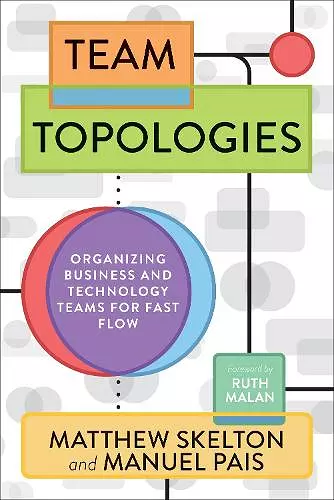Team Topologies
Organizing Business and Technology Teams for Fast Flow
Matthew Skelton author Manuel Pais author
Format:Paperback
Publisher:It Revolution Press
Published:17th Sep '19
Should be back in stock very soon

This non-fiction paperback, "Team Topologies" from Matthew Skelton & Manuel Pais, was published 17th September 2019 by It Revolution Press.
ISBN: 9781942788812
Dimensions: 225mm x 155mm x 15mm
Weight: 390g
240 pages